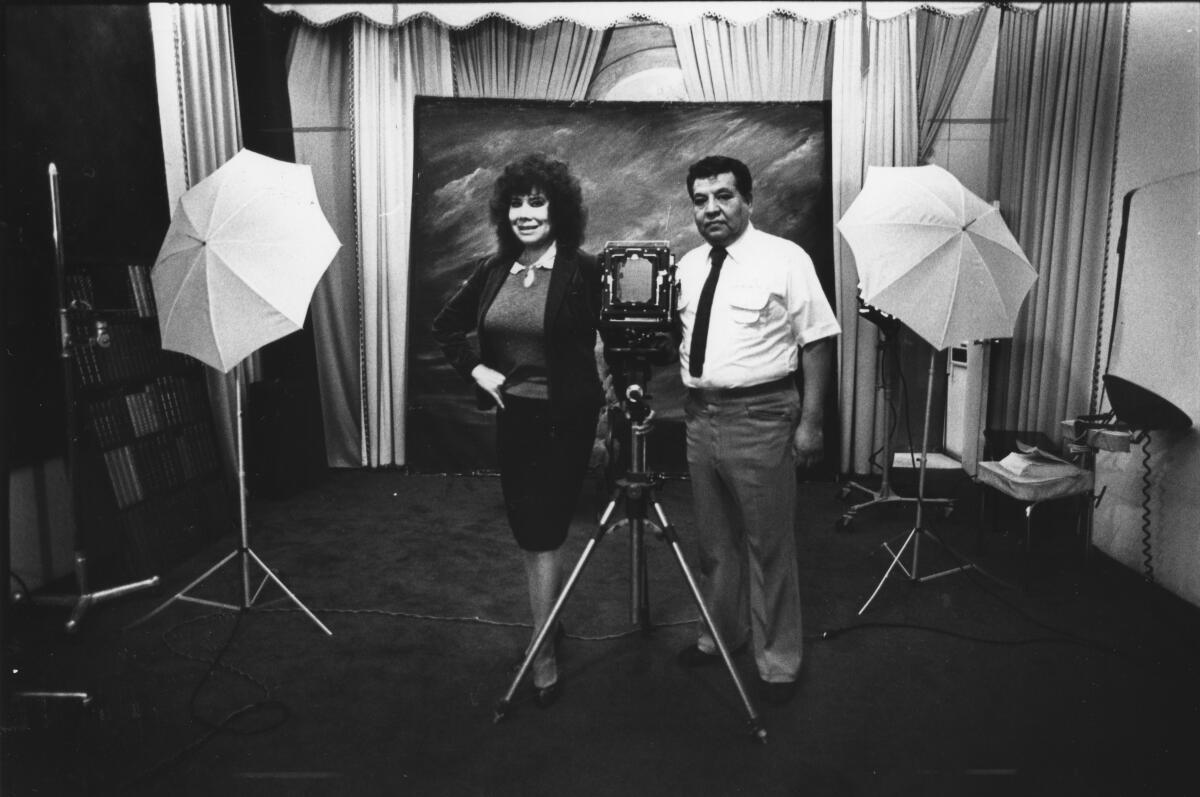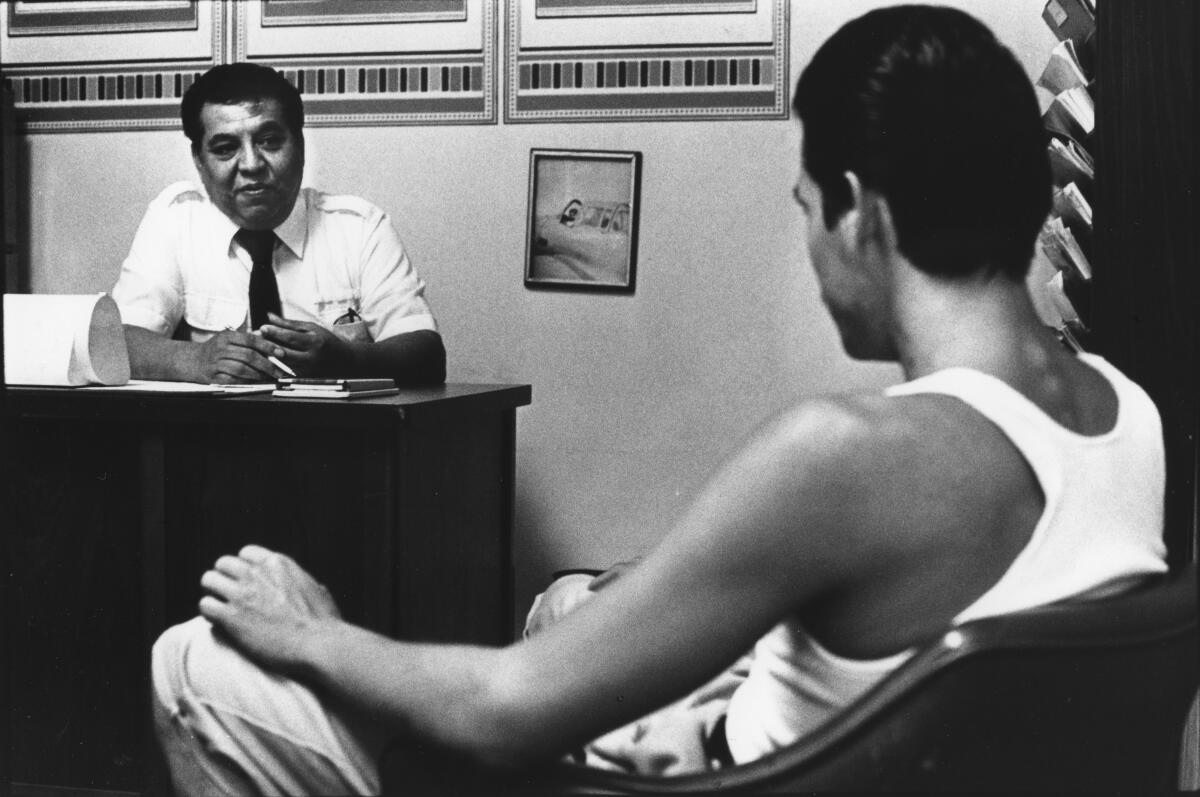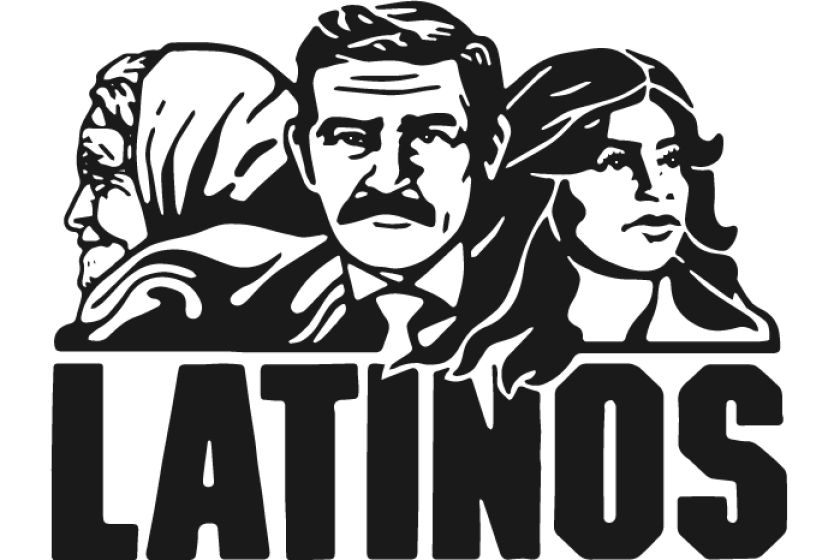Treating gangs ‘with a little love’

- Share via
Ignoring the sneers of skeptical neighbors, portrait photographer Richard Veloz and partner Irene Calvillo for 10 years have tried to raise money and community interest along Whittier Boulevard in Boyle Heights to help gang members return to school or find jobs.
The White Fence Gang, one of the oldest of an estimated 20 Latino street gangs on the Eastside, gets much of their attention.
“Ninety percent of the people around here think I’m crazy for wanting to treat them with a little love,” Veloz said, referring to those who blame White Fence for much of the graffiti and violence in the area.
“But for the most part,” Veloz insisted, “they come from disadvantaged families that never had a chance.”
Some fall victim to violence. In early March, Calvillo became concerned about one young man who suddenly disappeared after months of visiting the studio to discuss family and legal problems.
“Then he came in one Sunday wearing a cap to hide scars on his head,” she recalled. “On a piece of paper, he wrote that someone hit him on the head with a crowbar and that he would never talk again.”

Others frequently do not follow through after Veloz and Calvillo provide help.
“We’ve talked to their fathers, law enforcement officers, stepfathers, stepmothers, everybody!” Calvillo said. “We’ve done everything outside of driving them to work and working for them.”
But none of this seems to discourage the two. Take, for example, their continuing interest in White Fence member Raul Alaniz, 20, also known as “Yogie.”
Often dressed in sharply creased shirts, a tando (black hat), bano (a bandanna worn just above the eyes), oversized pants and sporting an earring and a large spider tattoo crawling on his arm and neck, he typifies the cholo look.
“We’re not angels, but we’re changing,” Alaniz said recently, standing on a hill that overlooks the heart of White Fence territory. “People say we don’t give anything back to the community, which is not true.
“Last Christmas, we threw a car wash to get feria (money) to buy toys for the children. We passed out 200 toys on Palm Tree Lane, and the parents flipped out. They couldn’t believe it.”
Inez Street, christened Palm Tree Lane by White Fence members in the 1940s, is the center of the territory that tradition demands they guard against intruders from other gangs. Where the lane dead-ends at the base of a steep, grassy hill, White Fence “kicks back” on Friday and Saturday nights.
“There is nowhere else for us to go,” Alaniz said. “The freeways wrecked our old neighborhoods and pushed us back like the animals in the forest. . . .” Weeks later, Veloz was frantically trying to find Alaniz a job to keep him from being returned to prison for violating parole. His efforts proved futile; Alaniz failed to show up for interviews with prospective employers.
But Veloz said he will resume his efforts with Alaniz when he is released. “A bumblebee has tiny wings and shouldn’t be able to fly,” Veloz said. “But that bee never heard it couldn’t fly.”
This story appeared in print before the digital era and was later added to our digital archive.
In the summer of 1983, The Times published a series on Southern California’s Latino community.
More to Read
Sign up for Essential California
The most important California stories and recommendations in your inbox every morning.
You may occasionally receive promotional content from the Los Angeles Times.














